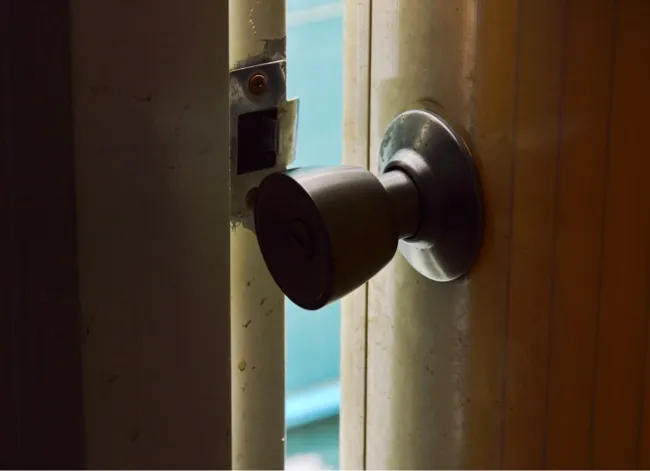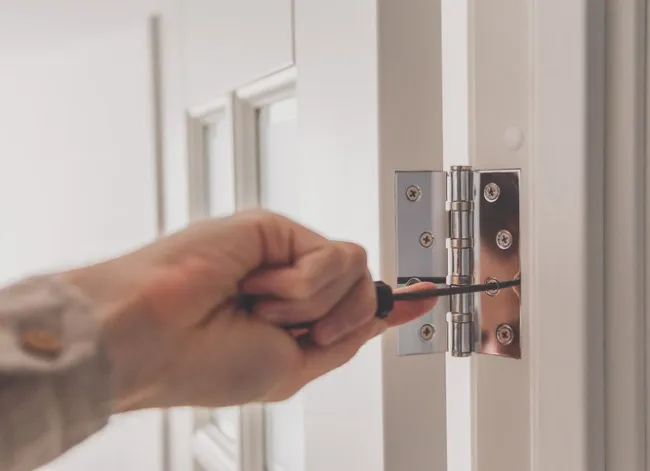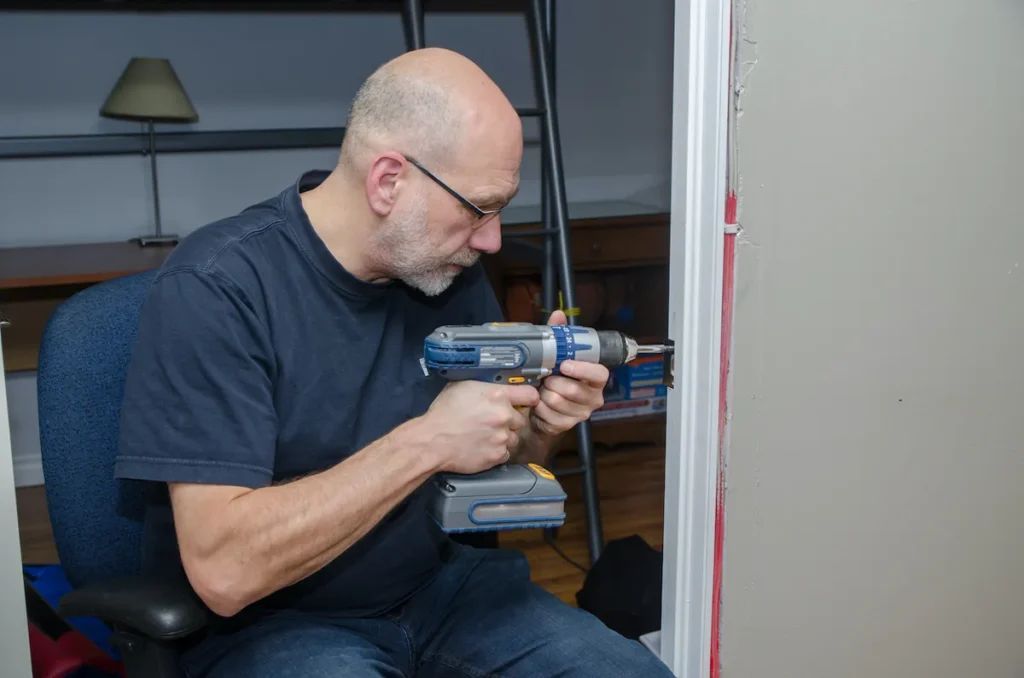Door Latch Troubles? 4 Powerful Fixes to Instantly Repair It
Having a door that won’t latch properly can be more than just a minor annoyance—it can compromise your sense of security and privacy. Whether it’s a bedroom door that doesn’t stay closed or a bathroom door that swings open with a simple push, a malfunctioning door latch can lead to embarrassing situations and inconvenience. Fortunately, fixing a door that won’t latch is often a straightforward task that doesn’t require professional help. In this guide, we’ll cover four effective methods to diagnose and repair a door that won’t latch, helping you regain a sense of safety and privacy in your home.
Why Won’t My Door Latch?
A door latch that doesn’t catch typically means there’s a misalignment between the latch and the strike plate on the door frame. This misalignment can happen for several reasons, often due to the wear and tear from frequent use. Over time, hinges can loosen, or the door frame may shift slightly, causing the door to sag. When this occurs, the latch may hit the door frame above or below the strike plate hole, preventing the door from closing properly.
Determining the exact cause of the problem involves a simple inspection to see where the door latch hits the strike plate or door frame. Once you identify the issue, you can use one of the following four fixes to solve the problem.

Step-by-Step Solutions to Fix a Door That Won’t Latch
1. Tighten the Hinges Using a Screwdriver
One of the most common reasons a door won’t latch properly is because the hinges have become loose over time. This is especially true for older doors or doors that are used frequently. Loose hinges can cause the door to sag, which changes the swing of the door latch and prevents the latch from aligning with the strike plate hole.
To fix this, start by tightening the screws in the door hinges using a screwdriver. This simple step can often solve the problem by pulling the door back into its proper alignment. If tightening the screws doesn’t fully correct the issue, you may need to use a longer 3-inch screw on the door jamb side of the hinge. This longer screw will reach into the wall framing, providing additional support and pulling the entire door frame slightly to realign the door and door latch.
Pro Tip: When using a longer screw, drive it into the top hinge to help lift the door if the latch is hitting below the strike plate hole. If the latch is hitting above the strike plate hole, drive the longer screw into the bottom hinge to pull the door down.

2. Shim or Sand Down Under Hinges
If tightening the hinge screws doesn’t fix the problem, the next step is to check the alignment of the door frame itself. In some cases, the door frame may have shifted, or the hinges may have sunk into the frame, causing a misalignment between the door latch and the strike plate.
To correct this, you can shim or sand down the hinges. Shimming involves removing the hinges from the door frame and placing a small piece of cardboard or a similar material into the hinge mortise (the recess in the door frame where the hinge sits). This extra material acts as a cushion, providing additional support to the hinge and helping to realign the door.
If the hinges are sitting too deep in the door frame (which can happen if the hinge mortises are too shallow), you may need to sand down the mortise to allow the hinge to sit flush with the door frame. Use a chisel or sandpaper to carefully remove small amounts of wood until the hinge fits correctly.
3. Enlarge the Strike Plate Hole with a Metal File
If the door is properly balanced but still won’t latch, the problem may lie with the strike plate hole itself. Over time, slight shifts in the door frame or repeated use can cause the strike plate hole to become misaligned with the door latch. If the door latch is only slightly misaligned (less than ⅛ inch), you can fix the problem by enlarging the strike plate hole with a metal file.
First, remove the strike plate from the door frame using a screwdriver. Then, use a half-round file to carefully widen the hole, matching the curvature of the latch hole. This allows the latch to slide into the strike plate hole without needing to lift, force, or manipulate the door beyond its normal push-and-pull operation.
4. Move the Strike Plate Up or Down
If the door latch is significantly misaligned (more than ⅛ inch) with the strike plate hole, simply enlarging the hole won’t be enough. In this case, you’ll need to move the strike plate to a new position. This process involves removing the strike plate, using a chisel to adjust the mortise (the recess in the door frame where the strike plate sits), and then repositioning the strike plate so that it aligns perfectly with the latch.
Start by removing the strike plate and using a sharp chisel to carefully enlarge the mortise in the direction needed (up or down, depending on where the latch is hitting). Test the door swing to ensure that the new position aligns with the latch. Once you’ve found the right spot, drill new holes and secure the strike plate in place with screws. Be sure to check the door again to ensure it closes and latches smoothly.
Final Touches: Filling Gaps and Touch-Up
Once you’ve successfully fixed the alignment of your door latches properly, you may need to do some finishing work to clean up the area. If you had to move the strike plate or shim the hinges, there might be small gaps or old screw holes left in the door frame. Use a wood filler that matches the color of your door frame to fill these gaps. Once the filler is dry, sand it smooth and apply a coat of paint or stain to match the rest of the frame. This will ensure a clean, professional-looking finish.

Preventing Future Door Latching Problems
Now that you’ve fixed your door, it’s a good idea to take some steps to prevent future door latching problems. Regular maintenance can help keep your doors functioning smoothly and reduce the need for repairs. Here are a few tips:
- Regularly Tighten Hinges: As part of your routine home maintenance, check the screws in your door hinges and tighten them as needed. This will prevent the door from sagging over time and ensure it stays properly aligned.
- Lubricate Moving Parts: Apply a small amount of lubricant to the latch and hinges to keep them moving smoothly. This reduces wear and tear and helps prevent future alignment issues.
- Check for Signs of Wear: Periodically inspect your doors and frames for signs of wear or damage. Address any minor issues before they become major problems, saving you time and effort in the long run.
By following these simple steps, you can keep your doors in good working order and ensure that they continue to provide the security and privacy you need in your home.
Conclusion
Fixing a door that won’t latch is a common DIY project that most homeowners can tackle with a few basic tools and some patience. By understanding the cause of the problem and applying the appropriate fix—whether it’s tightening the hinges, shimming the frame, enlarging the strike plate hole, or moving the strike plate—you can restore your door to full functionality. With a little maintenance and care, you can prevent future problems and keep your home safe and secure.
